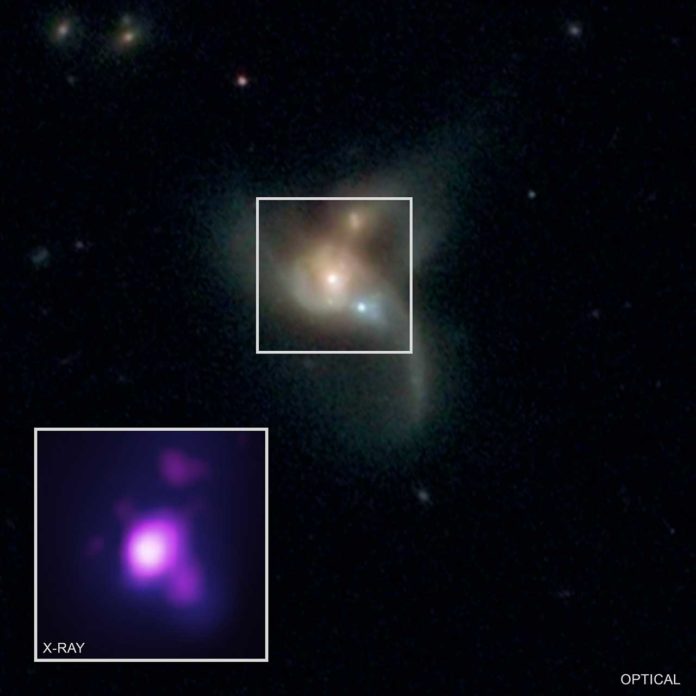While looking for pairs of black holes at the time, astronomers spotted three supermassive black holes on their collision period. This is the strongest proof yet found for such a triple system of actively feeding supermassive black holes.
Located a billion light-years from Earth, this unique system called SDSS J084905.51+111447.2 was captured by observatories including Chandra X-ray Observatory and other NASA space telescopes.
To reveal this uncommon black hole trifecta, specialists expected to merge data from telescopes both on the ground and in space. Initially, the Sloan Digital Sky Survey (SDSS) telescope, which scans large swaths of the sky in optical light from New Mexico, imaged SDSS J0849+1114. With the assistance of citizen scientists taking an interest in a project called Galaxy Zoo, it was then tagged as a system of colliding galaxies.
To follow up on these clues, astronomers then turned to Chandra and the Large Binocular Telescope (LBT) in Arizona.
The Chandra data uncovered X-ray sources—an indication of material being devoured by the black holes—at the bright centers of each galaxy in the merger, precisely where scientists anticipate that supermassive black holes to reside. Chandra and NASA’s Nuclear Spectroscopic Telescope Array (NuSTAR) additionally discovered proof for a lot of gas and dust around one of the black holes, typical for a merging black hole system.
The data from SDSS and LBT suggests that characteristic spectral signatures of material being consumed by the three supermassive black holes.
Co-author Christina Manzano-King of the University of California, Riverside said, “Optical spectra contain a wealth of information about a galaxy. They are commonly used to identify actively accreting supermassive black holes and can reflect the impact they have on the galaxies they inhabit.”
Ryan Pfeifle of George Mason University in Fairfax, Virginia, “Through the use of these major observatories, we have identified a new way of identifying triple supermassive black holes. Each telescope gives us a different clue about what’s going on in these systems. We hope to extend our work to find more triples using the same technique.”
Co-author Shobita Satyapal, also of George Mason said, “Dual and triple black holes are exceedingly rare, but such systems are a natural consequence of galaxy mergers, which we think is how galaxies grow and evolve.”
The paper is published in the Astrophysical Journal.
